Scroll to:
Street Art Culture in the Context of Urban Environment
https://doi.org/10.23947/2414-1143-2025-11-3-47-54
Abstract
Introduction. The phenomenon of mass culture is manifested in traditional and experimental forms of public visual statement. In the context of an urban environment, it is defined as street art. The peculiarities of this phenomenon form a specific aesthetics that significantly affects the context of architectural objects, the image of the city and its historical tradition. Defining this direction of contemporary art as something new that affects a person’s feelings and way of thinking, we classify it as a form of public communication and examine the attitude of city residents to modern street art. Their perception of modern art objects that are not tied to the aesthetic norm has been little studied. The free intervention of urban creativity in the human environment deals with issues of cultural and ethical boundaries. The object of the study is street art. The subject is the perception of street art by different segments of the population. The purpose of the study is to identify areas of potential responsibility of a street artist to the target audience, the population of the city. The objectives are to study the cultural demand of urban residents for the formation of a number of restrictions and freedoms of street art authors.
Materials and Methods. The study applied analytical and empirical methods. The analytical method included familiarization and analysis of the scientific literature on the topic under study. The empirical component is presented by the statistical survey of the population of Rostov-on-Don in the form of a digital questionnaire. Research stages: to study the history and current trends of this direction of contemporary art; to identify popular compositional and thematic preferences of artists, the most common stylistic decisions in street art; to identify the features of the perception of street art by residents of the city using a survey-questionnaire on the topic of research.
Results. Street art is considered as a technique for a comprehensive solution to the design problems of the urban environment through the synthesis of forms of artistic expressiveness and modern technologies, perceived by residents of the city as part of their life and daily routine. Most respondents understand the artistic value of street art works, consider this direction to be art. In this regard, their special attention is aimed at assessing the skill of performing images or small forms. At the same time, propaganda and agitation in the thematic component of art objects are very inappropriate, according to the townspeople. The study revealed an unobvious fact that the overwhelming majority of residents of the southern capital consider it necessary to clearly declare a number of mandatory requirements for the creator of a street art object, in particular, for the content, artistic component and placement of an art object in a public place.
Discussion and Conclusion. The cultural phenomenon of street art is highlighted in its historical development and in the context of the viewer’s perception of this phenomenon as part of their everyday life, which places special requirements on the aesthetics and functionality of works of street art. As the study showed, residents of the city consider it necessary to create an initiative group of representatives of not only professional communities, but also the local population, empowered to form restrictive regulations for street art authors while preparing for the festival of street culture.
For citations:
Kupriyanova E.V., Toneryan A.S. Street Art Culture in the Context of Urban Environment. Science Almanac of Black Sea Region Countries. 2025;11(3):47-54. https://doi.org/10.23947/2414-1143-2025-11-3-47-54
Introduction. Street art is considered to be an artistic statement genealogically and stylistically related to the development of American graffiti [1]. Modern street art has grown out of the practice of “marking out” the boundaries of its habitat by local youth criminalized groups. Graffiti was originally used by ghetto color youth in American cities as a means of fixing their control of the area with symbols, an acronym, “messages”. Fortunately, in Russia, graffiti did not acquire the functions of border signs of conflicting groups, there is not any breeding ground for ethnic confrontations. Even in the capital and regional centers, the crossroads of migration processes, with the obvious consolidation of communities, there are not any stable trends in the formation of territorial national ghettos [2].
Modern domestic street art centers are located in industrial development zones and they were conceived as part of a project to preserve empty buildings on the territory of factories. In closed areas of operating organizations, in order to optimize industrial spaces, street art was used as a tool to help change the depressive atmosphere through art. Over time, production-free areas increased, requiring improvement, and coworking spaces and museums of modern art began to appear on these areas. In St. Petersburg, there is the only street art museum in Russia on the territory of the existing Laminated Plastics Plant, which has areas for interchangeable expositions of street art.
One of the first Russian artists who worked on the street can be considered Kazimir Malevich. In 1920, together with Lazar Lisitsky, he united in UNOVIS (approvers of new art) to create several facades decorated in the style of suprematism. A few years later, Rodchenko adorns the facade of Mosselprom and later was awarded the prize “Art of the Street” in Paris for this work. Later, in the 1970s, the conceptualist groups “Gnezdo” and “Mukhomor” appeared. The formation of street art in Russia begins in the era of perestroika, when the fashion for hip-hop culture comes from the West and the spread of newfangled phenomena occurs in a serious information crisis. Information and various materials were disseminated, in any way related to new trends in art, illegally and thereby aroused even greater interest among the younger generation of the creative elite.
Thanks to documentaries such as “Bit Street”, “Style Wars”, “Wild Style”, an opinion is formed in Soviet society about hip-hop culture as a phenomenon consisting of elements such as break dance, rap music and graffiti. The beginning of the 2000s is becoming a new milestone in the development of street art in Russia. Having begun its development in the 2000s the activities of street artists also quickly subside [2]. In 2008, Igor Ponosov, one of the Russian street art activists, held “Street Art is Dead” exhibition, the meaning of which was to demonstrate the death of street art. In 2011, the first annual street art festival “Shorthand” was held in Yekaterinburg designed to revive this direction.
In 2012, the first Street Art Museum, which has no analogues in the world, was opened in St. Petersburg. In this year, Russian street artist Pasha 183 attracts attention of Western journalists, and the English newspaper “The Guardian” publishes an article comparing Pasha 183 with Banksy. Today, among the main street art artists in our country, one can single out: Misha Most, Alexei Luka, Zhenya Ozzika (0331c), Timofey Radyu, Kirill Kto, Stas Dobriy, Slava PTRK, Nikita Nomerz, the heads of different types of communities [4].
There are many styles and techniques of street art. The most common technique is mural; it is a drawing on plaster on a building or inside. This style comes from Latin America, where the most popular were stories about politicians, popular personalities, Catholic and Indian religious subjects, as well as everyday scenes from the life of the common people. The next in the popularity rating is a stencil style. The stencil with which the image is applied can be made of any material: cardboard, plastic, paper. The paint may be aerosol, acrylic, nitroenamel, etc.
Another equally popular style in street art is madonnari, complex and colorful drawings on asphalt. Posters and stickers are very widely used today, printed images on material with an adhesive base, glued to the wall, and some artists use collages of poster elements as an author’s experiment. One of the directions of street art is the creation of a design object in the format of a three-dimensional plastic element of an urban environment or an interior of a public space. As a rule, it is a part of temporary expositions, and it is created from various materials: papier-mâché, textiles, polyethylene, plastic, wood, metal. Some authors use very original techniques: mosaic from game constructor modules, weaving from threads, landscaping the surface of walls with moss, figured trimming of trees and bushes.
For street art, regardless of the style of work, there are two important criteria that determine the appropriateness and audience popularity: adaptation of the work in the context of the environmental space of urban development and the frequency of interaction with it between residents and guests of the city.
The study of the problem of uncoordinated intervention of artists in the zone of the historical part of Rostov-on-Don actualizes the problem of ambiguity in the perception of street art by citizens. Since 2021, Rostov-on-Don has become a popular location for annual street culture festivals. Initially, the festival was conceived as a way to combat vandalism and inscriptions on buildings and an opportunity for aspiring artists to tell to a wide audience about themselves.
The topic of the legitimacy of street art is very relevant from the very beginning of its existence and raises many questions among the residents of the city: whether street art is art or vandalism, whether street art works always harmoniously fit into the cultural space of the city, whether the level of artistic value of the image affects the popularity of the street art object.
Results. As part of the study, a survey of residents of Rostov-on-Don was conducted in the amount of one hundred people [5].
The objective of the study is to determine:
1. The interest of citizens in street art;
2. The number of respondents who perceive street art as a cultural phenomenon;
3. The most popular stylistic trends among citizens in street art;
4. The attitude of survey participants to street art and its presence in the urban environment.
The results of the survey-questionnaire were the main material for the study of the attitude of the city population to modern street art.
Most of the respondents were women (Fig. 1).
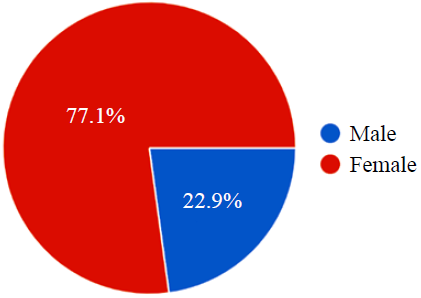
Fig. 1. Ratio of respondents by gender
The survey covered all age categories approximately equally (Fig. 2).
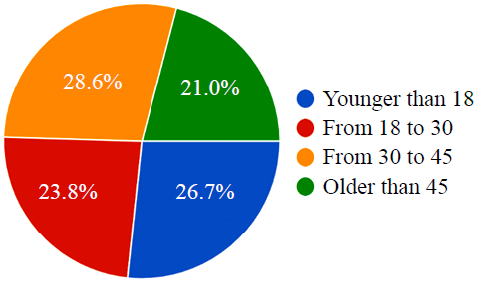
Fig. 2. Ratio of age categories that took part in the survey
Among the respondents, people with higher education and students predominated (Fig. 3).
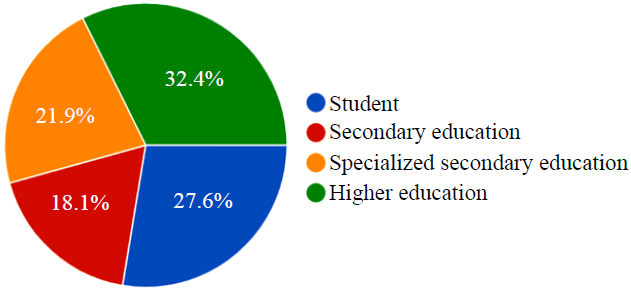
Fig. 3. Ratio of respondents by education level
The vast majority of respondents have an idea of what street art is (Fig. 4).

Fig. 4. The ratio of respondents surveyed by the level of awareness of the concept of street art
The results of the survey of respondents are presented in the form of diagrams. Most of the citizens surveyed believe that street art is art (Fig. 5).
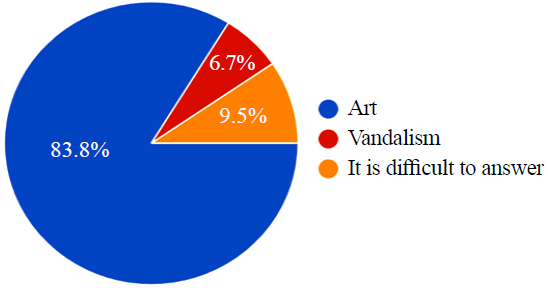
Fig. 5. Ratio of respondents surveyed who answered the question: whether street art is art or vandalism
Most respondents consider the presence of street art works in the city permissible (Fig. 6).
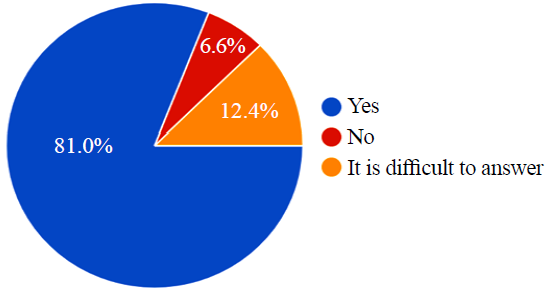
Fig. 6. The ratio of respondents surveyed who answered the question about the admissibility of the presence of street art works in the city
Most citizens believe that street artists, before starting to create an object in a public place, should coordinate its location, theme, sketches (Fig. 7).
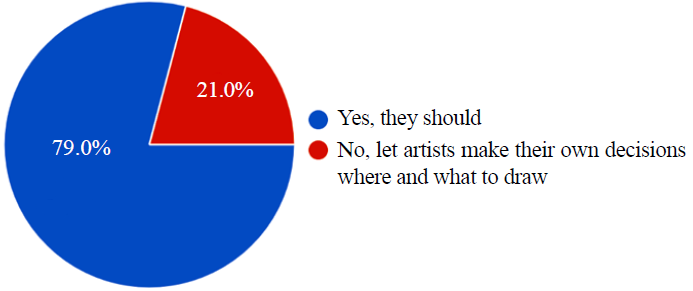
Fig. 7. The ratio of respondents who answered the question about preliminary coordination with residents of the city of creating an object in a public place
The presented diagram shows that the majority of citizens consider the approval of theme, sketch and location of street art images to be the predominant right of architects and designers in cooperation with the city administration and its residents. That is, the author of this work should act as the executor of the decision (Fig. 8).

Fig. 8. Understanding of citizens of the rights to approve theme, sketch and location of street art images
Among the surveyed citizens who are impressed by street art, the most attractive were the plot composition or the presence of an artistic technique of optical illusion (Fig. 9).
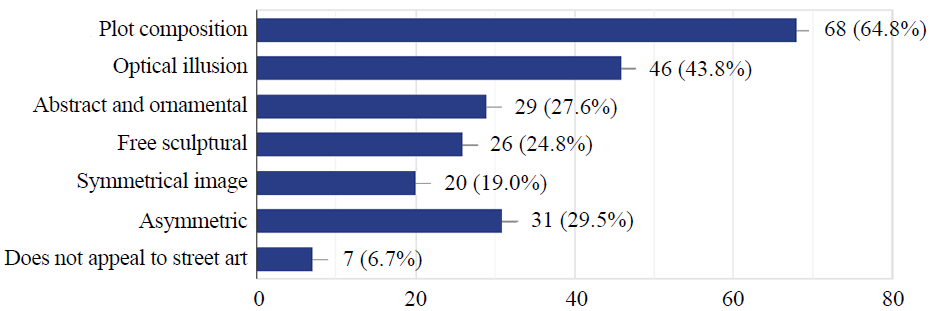
Fig. 9. Thematic preferences of citizens in street art images
Propaganda and agitation in images, the lack of artistic skill in performing the image in street art are unacceptable for the majority of respondents (Fig. 10).

Fig.10. Citizens’ ideas about unacceptable themes in street art images
Answering the question of what the townspeople consider positive in the works of street art, the respondents confirmed the opinion about the high dignity of the masterfully performed work of street art which makes it more attractive (Fig. 11).

Fig. 11. Citizens’ ideas about the hierarchy of artistic merits of street art images
Reflecting on this direction as one of the forms of the urban environment improvement, the majority of respondents agree with the statement about the prospects of street art, but at the same time place a significant emphasis on the importance of the authors’ compliance with certain restrictions and requirements (Fig. 12).

Fig. 12. The ratio of surveyed respondents who made an opinion on the admissibility of street art as a form of improvement of the urban environment
Discussion and Conclusion. Street art culture is part of the urban environment. It is formed by many factors of the social processes of civil society and exists as an alternative form of creative expression that has crossed the boundaries of galleries and museums. This movement towards the viewer, on the one hand, allows the artist to declare themselves as a creative unit without any statuses and take part in the public life of the city, and on the other hand, author’s work becomes part of the life of every resident and the fact that it significantly affects everyday life of the citizens, their quality of life, emotional and sensual state [6]. The target audience often gives feedback by publishing pictures on blogs and on personal pages of social networks against the background of street art works and in the distribution of photographs the acceptance and popularity of some works is recognized. Unfortunately, that’s all regarding the resources for receiving feedback from the townspeople. Our research has shown that the vast majority of South Town residents are receptive to street art artwork and consider it a direction in art.
Due to this survey, the socio-cultural demand of the townspeople was identified and the trajectory of subsequent research was outlined. According to the results of the survey, in the works of street art, most of the respondents are attracted by the skill of performing images and this is an indicator of a formed understanding of the artistry of the works and the presentation of the beauty aesthetics of wall painting. At the same time, the townspeople consider themes of agitation and propaganda in the images to be the most inappropriate for stationary decoration.
According to the available data, we cannot accurately determine the reason with which the prevailing opinion is associated, and therefore we consider it necessary to continue the study in order to clarify them. In part, it is with this factor that the request of the majority of respondents to legally fix the permissible ethical boundaries and the formation of a number of stricter restrictions for authors creating a street art object in a public place correlate. This is connected with the opinion of the majority about the need to create control committees with the involvement of the city administration, artists, designers and architects with the hope of their competence in approving theme and draft design of an art object, its location with the involvement of representatives of the city community.
Today, some forms of attracting citizens to discuss and evaluate individual competitive projects for the creation and reconstruction of public architectural and environmental spaces already exist on administrative portals, but in this communication process there is still no proposal for discussing, voting and approving projects of street art. According to those for whom they are created, this process should be discussed as an independent direction in the design of the urban environment.
Street art is defined as the totality of different forms and directions of creative activity of young people in the context of the urban environment. Artistic decoration of architectural structures is not a new art form, but it is street art that is distinguished by an obvious feature, an urban orientation. In the context of industrial complexes and structures, this visual style exists as a challenge that encourages life contrasting with faceless monoliths. In a part of an old city, where buildings are of the early 20th century and older, architectural objects of historical heritage are not subject to restoration in order to preserve the authentic image of the city, but they are decorated with images of modern artists. An increased level of responsibility of organizers of street art festivals and singer-songwriters is required. This fact is obvious and reveals the problem of inconsistency between the request of the townspeople and the policies of the youth communities of the city, giving rise to a number of problems that require further study and solution. This proves that the cultural phenomenon of street art contributes to the identification of the most relevant social processes of today’s generation, its ethical norms, values, ways of interpreting them, and affects the quality and forms of social connections in the context of the urban environment.
References
1. Goncharova N.G. Street art in the current urban environment: a new form of monumental painting. Academic Bulletin UralNIIproekt RAASN. 2021,1:64–69. (In Russ.) https://doi.org/10.25628/UNIIP.2021.48.1.011
2. Tkachev V.N. Graffiti in a modern city. Bulletin of MSUCE. 2014;4:14–21. (In Russ.)
3. Antsiperova M. The history of street art in Russia from Rodchenko and Malevich to Radi and Pavlensky. Poster Daily. URL: https://daily.afisha.ru/culture/1012-istoriya-ulichnogo-iskusstva-v-rossii-ot-rodchenko-i-malevicha-do-radii-pavlenskogo/?ysclid=meo9ywqigz751738794 (accessed: 10.12.2024).
4. Bronnikova O.N. The formation of street art in Russia. In: Best student research. Collection of articles of the IV International Research Competition in 2 parts. P. 1. Pp. 69‒70. Penza: Science and Education (SP Gulyaev G.Yu.). 2021. Pp. 69‒70 (In Russ.)
5. Survey-questionnaire on the topic “Is Street Art an Art or a Vandalism?”. URL: https://forms.gle/9mU2Z1cj2oc51CgL8/ (accessed: 29.10.2024).
6. Freud Z. Psychology of the masses and analysis of the human I. Moscow: Eksmo; 2023. 320 p. (In Russ.)
7. Manzaripasha A., Stanislavsky A. Cultural perception of design objects. Design. Research. Education. 2021;17(2):43–58. (In Russ.)
About the Authors
Elena V. KupriyanovaRussian Federation
Kupriyanova Elena Vladimirovna, Associate Professor, Department of Design, Don State Technical University (1, Gagarin Sq., Rostov-on-Don, 344003, Russian Federation)
Alina S. Toneryan
Russian Federation
Toneryan Alina Sergeevna, Student, Don State Technical University (1, Gagarin Sq., Rostov-on-Don, 344003, Russian Federation)
Review
For citations:
Kupriyanova E.V., Toneryan A.S. Street Art Culture in the Context of Urban Environment. Science Almanac of Black Sea Region Countries. 2025;11(3):47-54. https://doi.org/10.23947/2414-1143-2025-11-3-47-54















